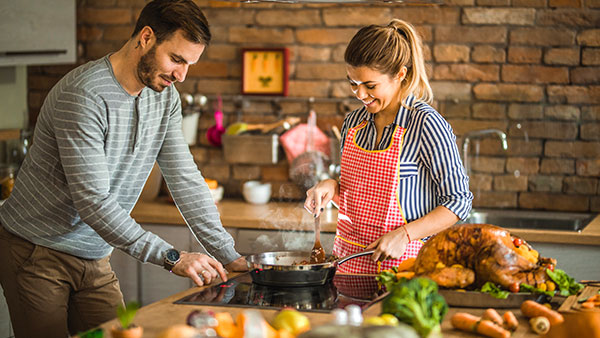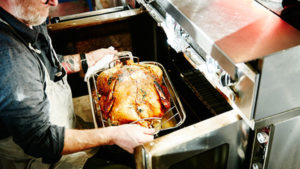
Safe cooking practices can help prevent fires.
Cooking is the leading cause of home fires and home fire injuries. The National Fire Protection Association focuses on the fact that more fires start in the kitchen than any other part of the home.
Read on for some tips to help you practice fire safety in your kitchen.
Cooking safety
 Cooking fires can happen quickly and cause significant injuries. Follow these basic tips to improve cooking safety:
Cooking fires can happen quickly and cause significant injuries. Follow these basic tips to improve cooking safety:
- Never leave any cooking unattended. If you must leave the room, turn the burners off
- Keep children at least 3 feet from any area where cooking takes place or where hot food or liquids are handled
- Wear short sleeves or tight-fitting sleeves when cooking; loose clothing or dangling sleeves may catch fire
- Keep anything that can catch fire ̶ towels, pot holders, papers ̶ away from cooking areas
- Always have a tight-fitting lid near where you use a skillet for frying. Cover a skillet fire with the lid and turn off the burner
Choose the right fire extinguishers
Identify the areas in your home where a fire is most likely to occur, and then store the correct class of extinguisher nearby. Especially consider extinguishers for your kitchen, work areas and grilling locations. Share the locations and how to use each extinguisher with each member of your household.
- The most versatile fire extinguisher is one listed for several kinds of fires, called an “ABC” or “multi-purpose” fire extinguisher
- Purchase only those extinguishers tested by a nationally-recognized testing laboratory
- Purchase an extinguisher that can easily be handled by the member of the household who may use it; do not purchase an extinguisher too heavy to use
- Use the extinguisher by remembering PASS:
Pull the pin. Hold the extinguisher with the nozzle pointing away from you and release the locking mechanism
Aim low. Point the extinguisher at the base of the fire
Squeeze the lever slowly and evenly
Sweep the nozzle from side-to-side
Practice fire safety, and live in the confidence that if a fire occurs, you and your family are prepared. For more information on fire safety and creative ways to educate your children, visit NFPA’s public information site.
More posts on fire safety topics:
Correctly placed, working smoke alarms save lives
Escape plans critical to surviving a fire
Carbon monoxide: Combustion’s deadly companion
College students may need fire prevention refresher
This loss control information is advisory only. The author assumes no responsibility for management or control of loss control activities. Not all exposures are identified in this article. Contact your local, independent insurance agent for coverage advice and policy service.
